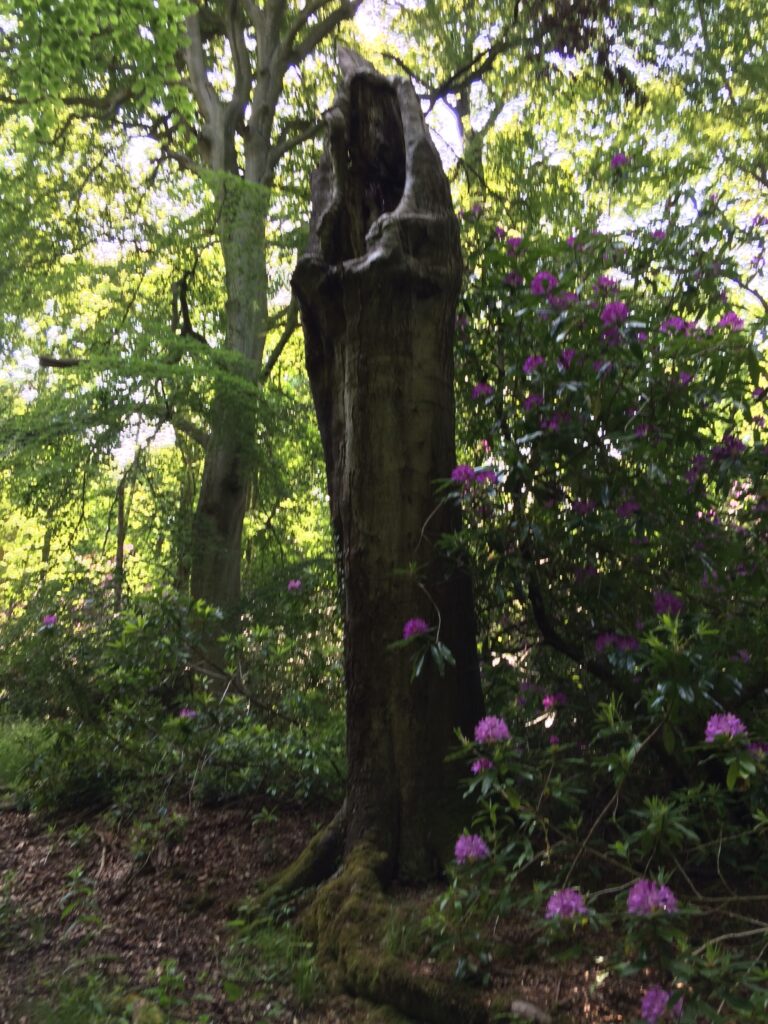One of the many joys of being at Gladstone’s Library, where I have come to serve two months as Chaplain, is to go for a walk through the Gladstone estate, which the family kindly offers to the public and gives further access (with an available pass) to Residents of the Library.
One enters through a large castle gate in the center of Hawarden village and follows a wide path through rolling hills where sheep graze. Residents can then go on through another gate and wander past a stream and into the woods. It is a rare pleasure to be alone in nature and yet, as a Californian from the heart of Bigfoot territory, being close to the Library and human civilization is a comfort.
The path goes on through another pasture where cattle occasionally are. Sometimes I will meet another walker and I have enjoyed the variety of people and dogs I have met in my time here. A little further on is another wood and as I was admiring the purple rhododendra in the shade, I was surprised by what I thought was a fellow walker enjoying the solitude.
I went back to the Library and wrote the following poem:
Encounter in Bilberry Woods
Walking in the woods
I follow the road rutted
by spring rain, the branches,
newly leafed, spreading their boughs
flat to catch the shafts of sunlight,
Then among the trees
I, startled, stopped, as there stood
a figure, cowled, his face
deep in shadow and his robe
pulled round him as he held
his hands folded over his heart
in protection or prayer.
Then I saw he was, in fact,
carved; a tree trunk hollowed out
designed by fire or rot, still standing.
Yet the shape, arresting, caught
my thoughts and sent them reaching
to a distant, earlier time
when the devout set out alone
to find God in a holy place.
This statue, hewn by nature,
was purely gift — to stop
a traveler in her tracks,
giving history access and
wonder shape in the day.
Having spent time several summers in Durham, I am familiar with the work of sculptor Fenwick Lawson, and at first glimpse, thought this might be his work. I have admired his sculptures in Durham Cathedral and St. Mary’s Church on Holy Island as well as at Lindisfarne Abbey and Durham City Square (where the original wood figures have been replaced by bronze to withstand weather).
But the piece in Bilberry Wood is not the work of human hands, and time and weather will no doubt change it. St. Deniol came to my mind as this was the area where he lived (and Gladstone’s was known for many years by his name which is the name of the adjacent parish church).
It is a remarkable image, rough hewn when examined closely but not far from the masterwork of a skilled hand. If you happen to visit Gladstone’s Library in the near future and have time to go for a walk and see it, do so with my warm regards.
Penelope Duckworth
